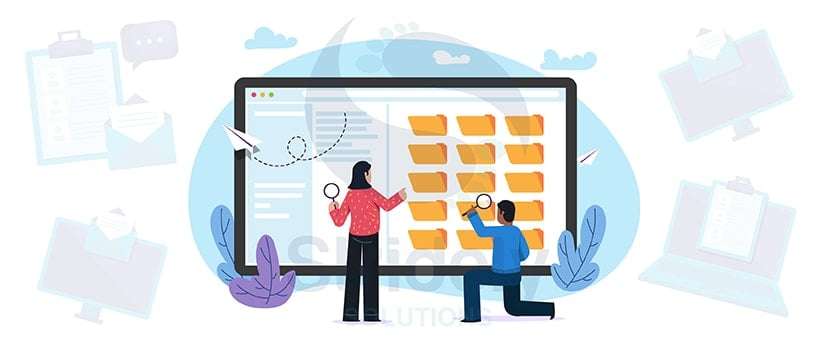Working with teams that are distributed across different regions could uncoil a series of challenges. For one, collaborating at such a wider level is a problem difficult to solve and to top this, avoiding the possibilities of miscommunication is another crucial thing.
Where at one end, seamless interaction between teams can accelerate the productivity of teams, communication gaps and disparity in the documents shared, might account for poor organizational performance. Having said that, you would never want to dismantle the trust your customers have in you. Evidently, you undertake all possible measures to ensure that projects submitted are of top-notch quality and at large, error-free.
But to aid this, you would definitely need to have an ecosystem where everything is organized and synchronized. A single glitch between the workplace would disrupt the workflow, hampering the overall efficiency. Now, when we talk about the workflow within the organization, document collaboration happens to be the most important step.
Imagine you have a team comprising of 15 members. Each has access to the project documents and can edit or modify it as per their own convenience. A situation arises where member X edits the document, in the manner he/she finds best. Now, another member of the team says, Y isn’t aware of this change and goes on to edit the previously modified file. This leads to utter confusion where everyone edits the file, leaving it confounded.
The only solution to such a problem is the collaboration of online documents. It is important that every process is coordinated and synchronized, eliminating the possibility of error and that where we ideate the incorporation of certain steps to ensure optimal document collaboration.
This article is specifically designed to guide on the best practices and without wasting any time further, let’s move ahead to uncover them.
Steps You Should Take To Ensure Online Document Collaboration
-
Management OF Document Collaboration
When there are multiple people working on the same project, it is important that at the very start, roles are identified and duties divided. In fact, if all of the members are at the same level, they can edit the document as and when they find it inevitable. But if the participating members have different roles, the ease to modify the document should be limited and would necessitate the need to take permission whenever a subordinate wishes to make changes.
Such an infrastructure ensures that the concerned party is always notified about what needs to be done and only after the permission has been granted, can anyone apart from the authorized edit the document. Further, a time frame needs to be set for every edit and before publishing the final piece, a draft should be shared with the owner to avoid the emergence of any discrepancy. It is best to notify the admin or the owner, of every change and move ahead along with the team.
-
Seamless Communication
One of the common reasons why organizations fail to deliver projects in time or pitch one with errors is the communication gap. When there is minimal or communication between the members of the team, the work is bound to suffer and get delayed. This creates a negative impression in the mind of the customers affecting the business on a whole
To ensure that there persists an efficient document collaboration, it is important to use tools that promote instant messaging services. While working, team members might experience issues or doubts and the faster their queries get answered, the easier it becomes to continue with the process.
One best practice while editing documents is to leave a comment or provide a short explanation of the need to edit a piece within the document. This notifies the other members so that they can have a look and decide whether the edits are required. Where the top tier members can leave a comment after they have modified the document, tagging the concerned members, the ones that aren’t authorized to make changes without the permission are expect to first leave a comment and if approved by the rest, go on with editing the document.
Such a process ensures transparency across the members of the team where everything is done with total collaboration.
-
Consistency Across Documents
Editing documents should not be such that the older versions are lost or cannot be tracked back. It’s best to create a version of the documents while one edits it. This makes it easier for the owner to keep track of the original document and outline the changes. Also, if documents are given numbers every time a modification is done, the owner can easily determine if there were any unauthorized access is made to the document.
Further to adhere to the security norms, access granted to third party members should be revoked as soon as the job is complete. The owner can, under specific conditions, limit the copying and printing of the documents at external sites. This ensures that the document isn’t hacked or used for evil purposes. Collaborating in real-time might also require remote members to access the files. Based on the roles defined by the owner, the ease of saving and distributing the documents can be restricted.
Final Word
Without a doubt, document collaboration is important, irrespective of the type of business you are in. It is, in fact, one of the vital things within an organization and every team leader should deploy solutions to ensure optimal collaboration of documents.
There is an array of digital tools available across the industry that helps with the process of document collaboration. Adopting either one of them would make the task of document collaboration easier and faster. You might find creating and editing documents through email a better way, but when you have multiple members and a plethora of documents, automating the process through digital tools is the best resort. So, step ahead, take the leap, download a document collaboration tool and adopt the measures stated above to ensure seamless collaboration across your organizational teams.


